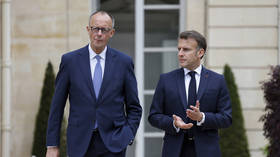By Timofey Bordachev, Program Director of the Valdai Club
The world – including Greater Eurasia – has become a more comfortable environment for Russia to pursue foreign policy objectives. Today, the balance of investment and return in Moscow’s external strategy is more favorable than at any time in recent memory. What remains is to sharpen the effectiveness of this policy in Russia’s immediate neighborhood, aligning it more clearly with national development goals.
Russia has demonstrated its ability to withstand direct confrontation with the West, largely by mobilizing internal resources and adapting to emerging challenges. At the same time, the shift in the global balance of power – most notably the strategic irrelevance of Western Europe – has played into Russia’s hands. In doing so, Moscow has reaffirmed a central aim of its foreign policy: defending its sovereign right to determine all matters concerning its national security.
Yet even as Russia holds the line at its borders, it faces persistent uncertainty in the broader regional space. That is where the concept of Greater Eurasia, introduced in the mid-2010s, becomes relevant. This strategy aims to build a secure environment around Russia without resorting to coercion or domination. It is rooted in Moscow’s core interests and offers a realistic path to stability in a world where direct control over neighboring states is no longer desirable – nor sustainable.
There are three reasons why Russia has no interest in continued territorial expansion. First, history shows that extending beyond the natural boundaries of Russian settlement has repeatedly endangered statehood itself. Second, the cost of exerting control over neighboring states – even small ones – would quickly generate dissatisfaction among Russian citizens. Third, the Greater Eurasian space is no longer the geopolitical vacuum it was in the 18th and 19th centuries. Then, Russia could only ensure stability through force. Today, it is flanked by structured powers such as China and India, alongside assertive smaller states determined to chart their own paths.
In this context, Russia has neither the need nor the justification to rely exclusively on military or diplomatic means to safeguard its national interests. The geopolitical environment in Greater Eurasia has grown more favorable, particularly in terms of the cost-benefit ratio for Russian engagement.
Still, this does not eliminate the risks. Regional powers have tensions among themselves. The border clashes between India and Pakistan, for example, underscore how vulnerable Eurasian stability remains – even among nations that are formally cooperative partners of Russia. Many of these countries are involved in the same multilateral institutions as Moscow, such as the Shanghai Cooperation Organization or BRICS. Yet cooperation does not negate the potential for conflict.
Moreover, Western powers – though weakened – have not disappeared from the game. They continue to interfere in Eurasian affairs, either directly or by encouraging political diversification among Russia’s neighbors. In some cases, the West may attempt outright destabilization of friendly Central Asian regimes. In others, the strategy is more subtle: nudging states toward broader foreign policy networks that include Europe or the US. While not inherently hostile, such maneuvers can sow distrust between Russia, China, and their smaller partners.

The truth is, the West sees Eurasia less as a zone of strategic interest and more as a playing field for diplomatic gamesmanship. This unpredictability only adds to the region’s fragility. At the same time, many smaller Eurasian nations are vulnerable to internal unrest, especially due to their dependency on a global economy dominated by parasitic financial centers. As recent years have shown, Western powers are struggling to reinvent that economic system beyond superficial trends such as the so-called “green transition.”
For countries lacking global leverage or domestic resilience – including much of Europe – this poses a serious threat. Russia, meanwhile, must consider how these dynamics affect its own stability. Despite successes in confronting the West over Ukraine – thanks in large part to support from the Global South – Moscow is being drawn deeper into regional crises. This increased engagement, though often necessary, places additional strain on national resources.
It is in Greater Eurasia that Russia’s involvement in managing shared development and security challenges will be most critical. Here, Moscow has the chance to create lasting mechanisms of regional stability and growth. It must do so in a way that integrates the goals of neighboring medium-sized and small states with its own strategic vision – while also considering the long-term trajectories of China and India.
The journey toward a safer, more predictable Greater Eurasia is only beginning. But Russia is well-positioned to lead it – not through force, but through principled cooperation and a clear-eyed focus on development. To succeed, it must continue aligning foreign policy with domestic priorities and resist the temptation to be drawn into old imperial habits. Greater Eurasia offers an opportunity to build a new model of regional influence: one that is multipolar, pragmatic, and rooted in mutual respect.
This article was first published by Valdai Discussion Club, translated and edited by the ReadNOW team.